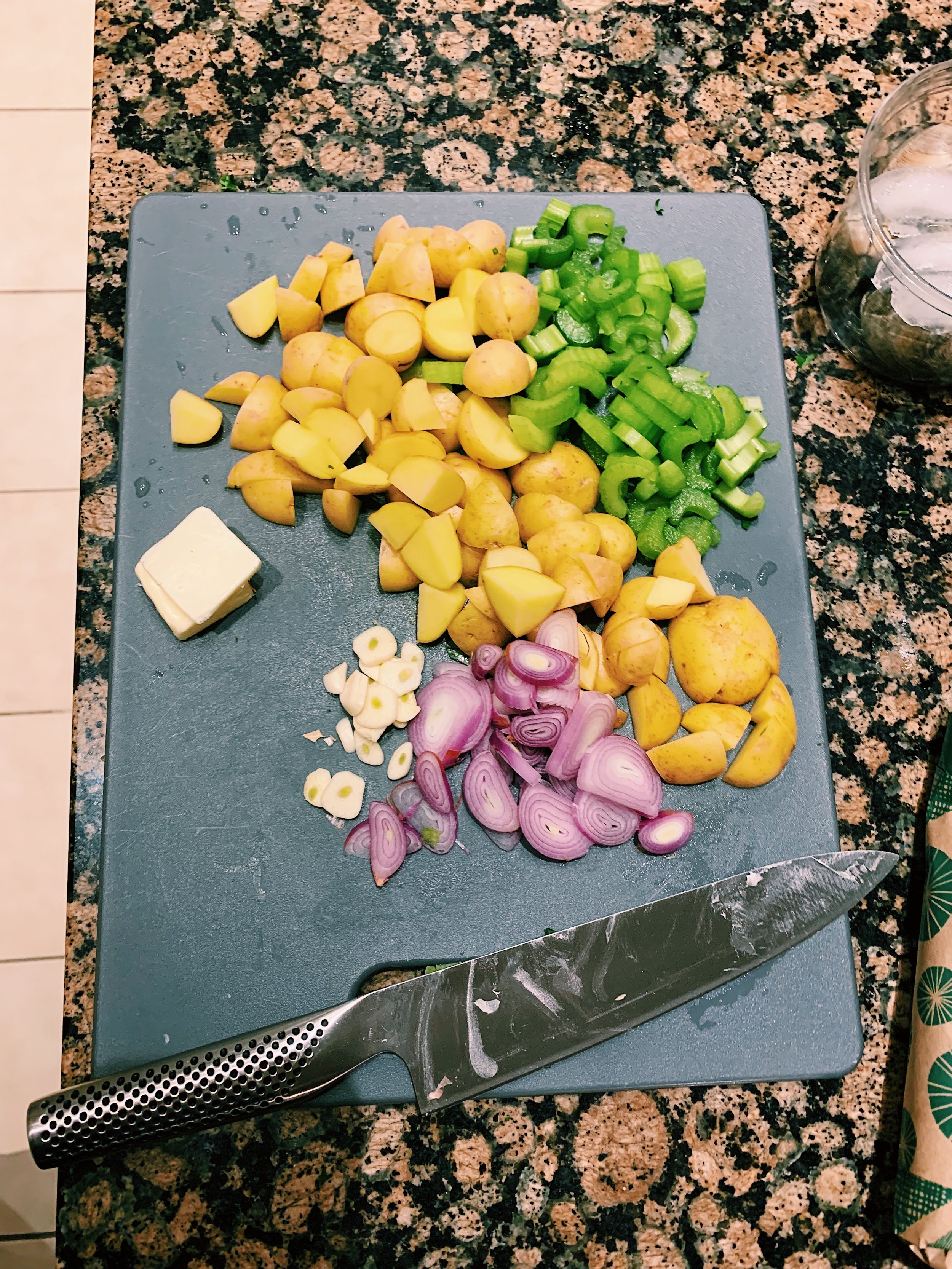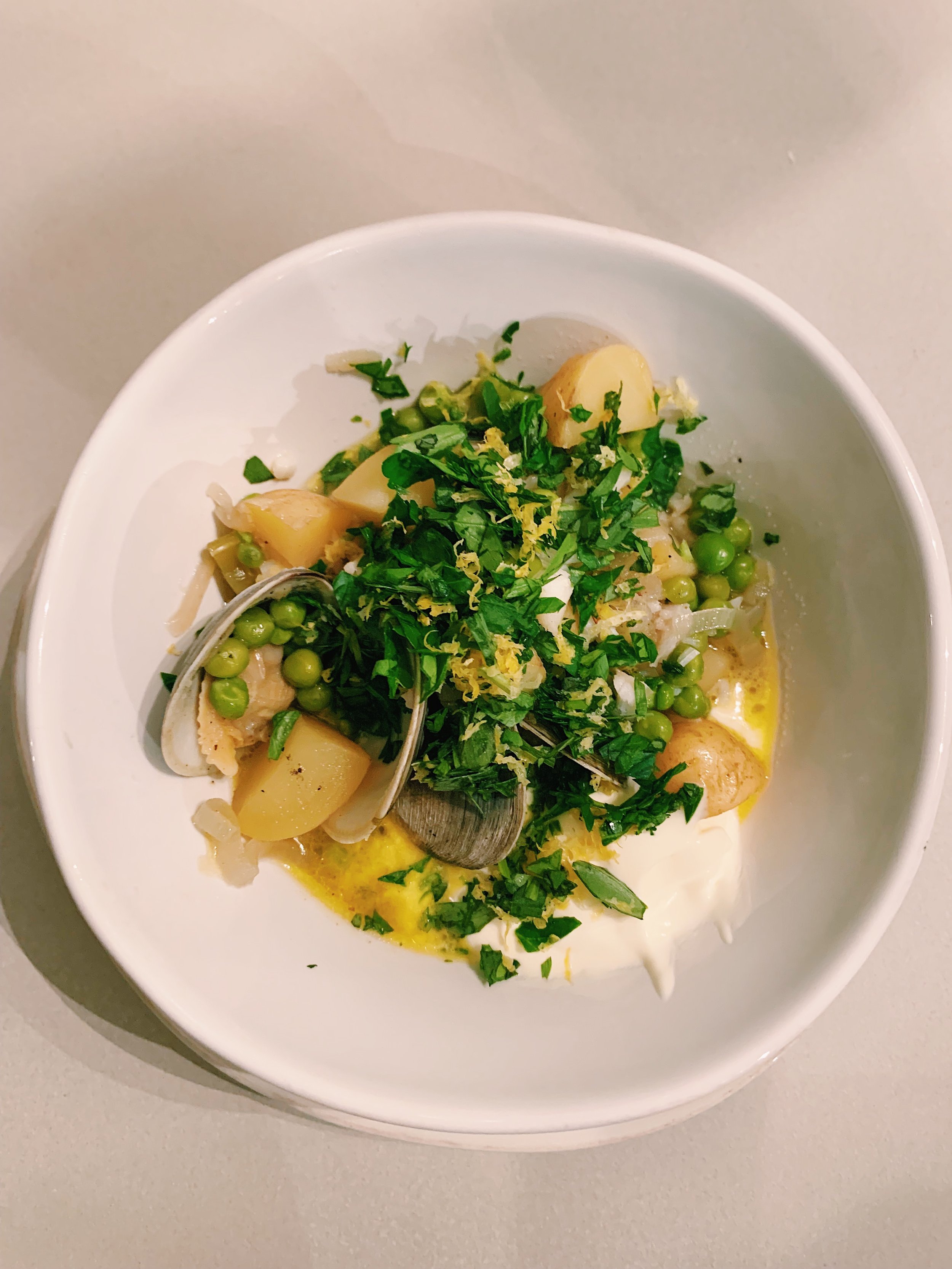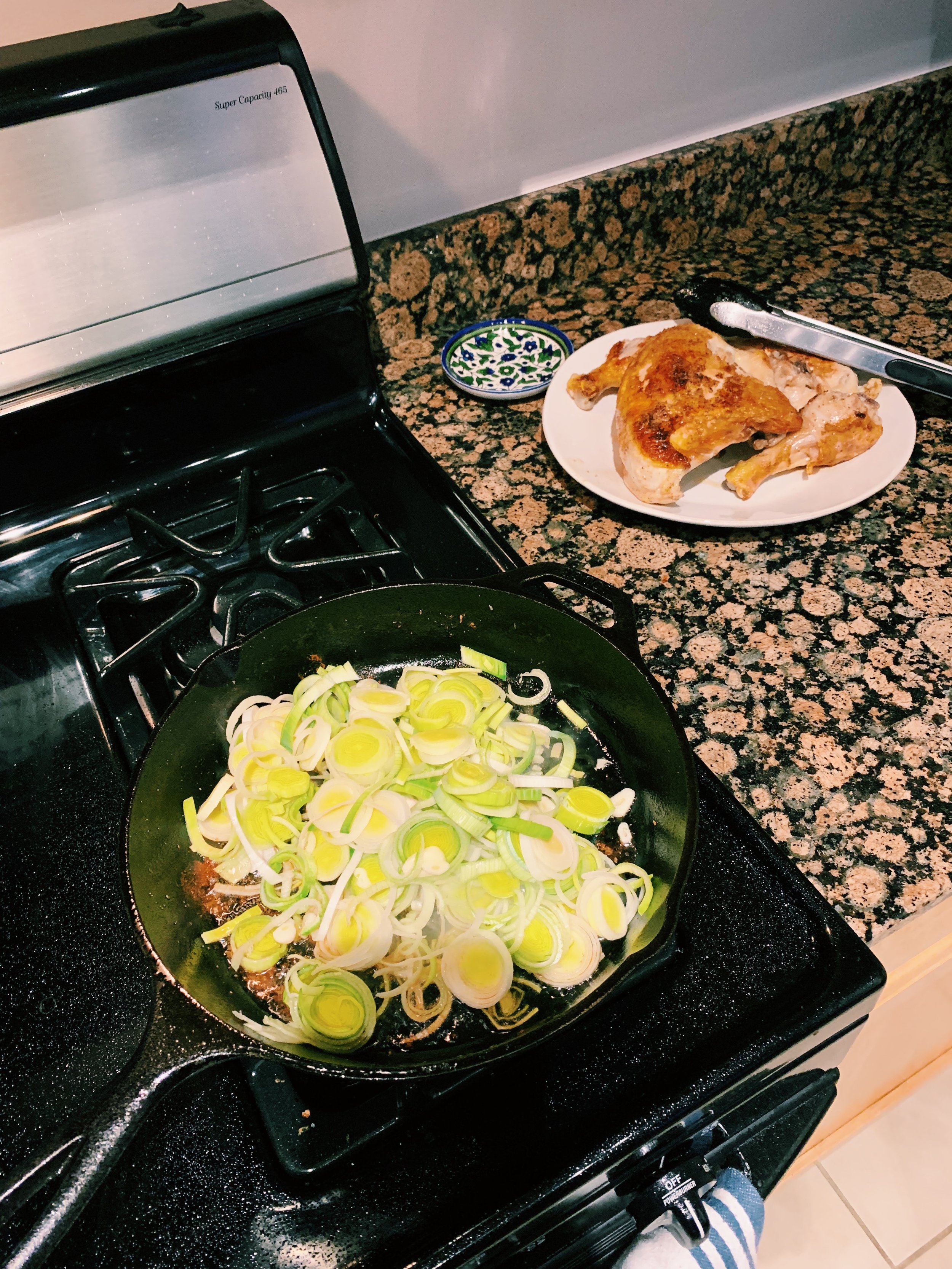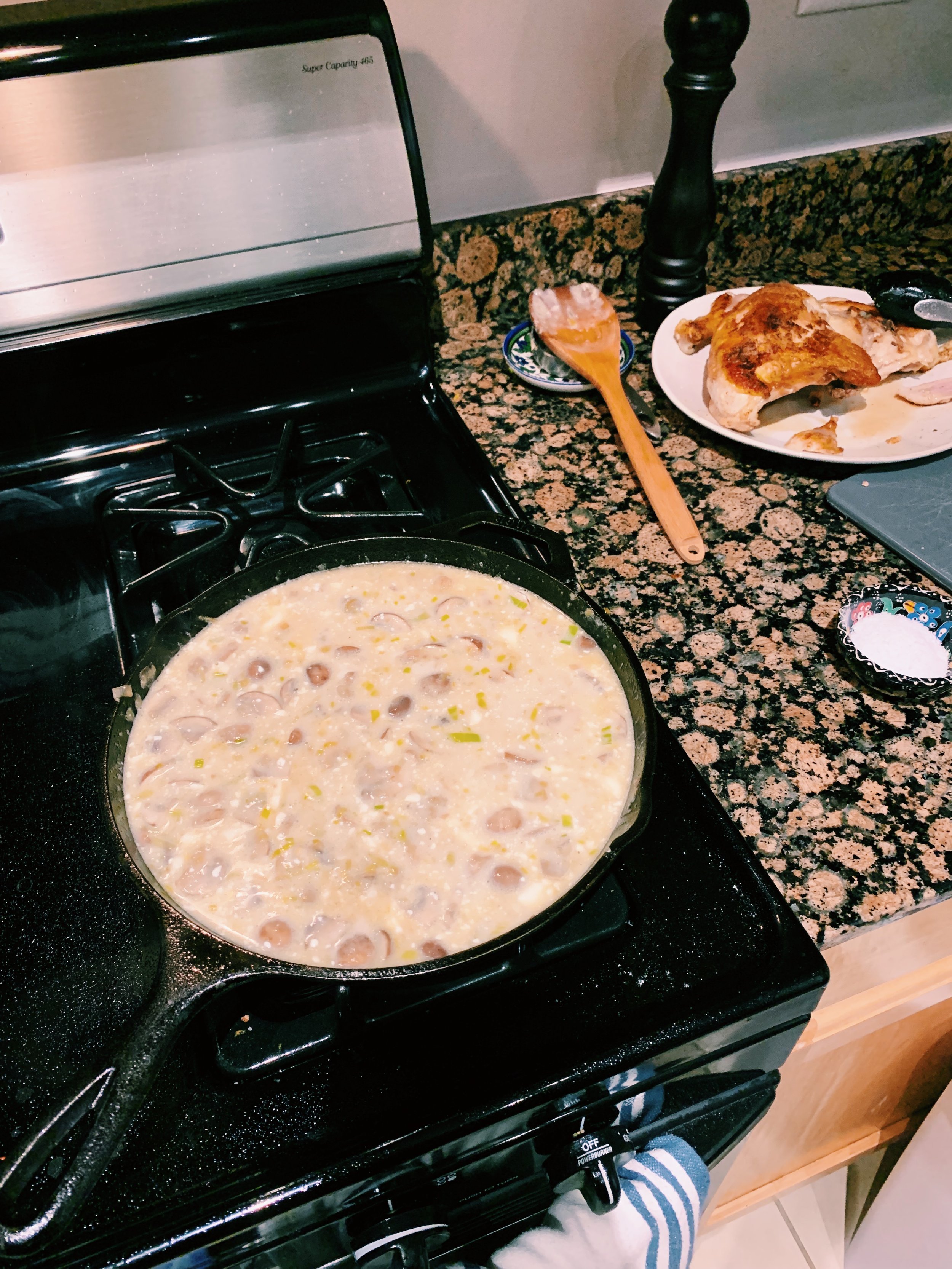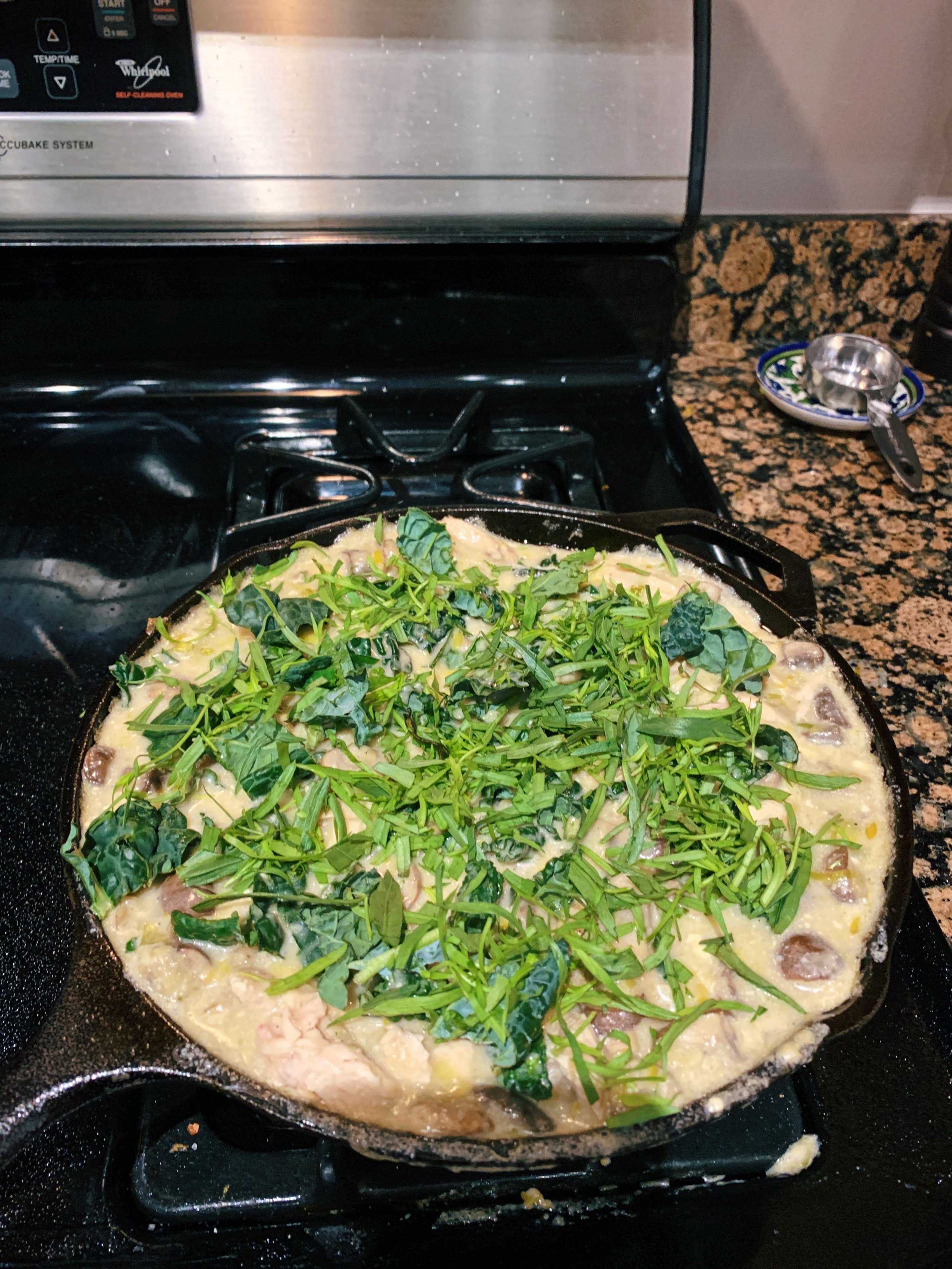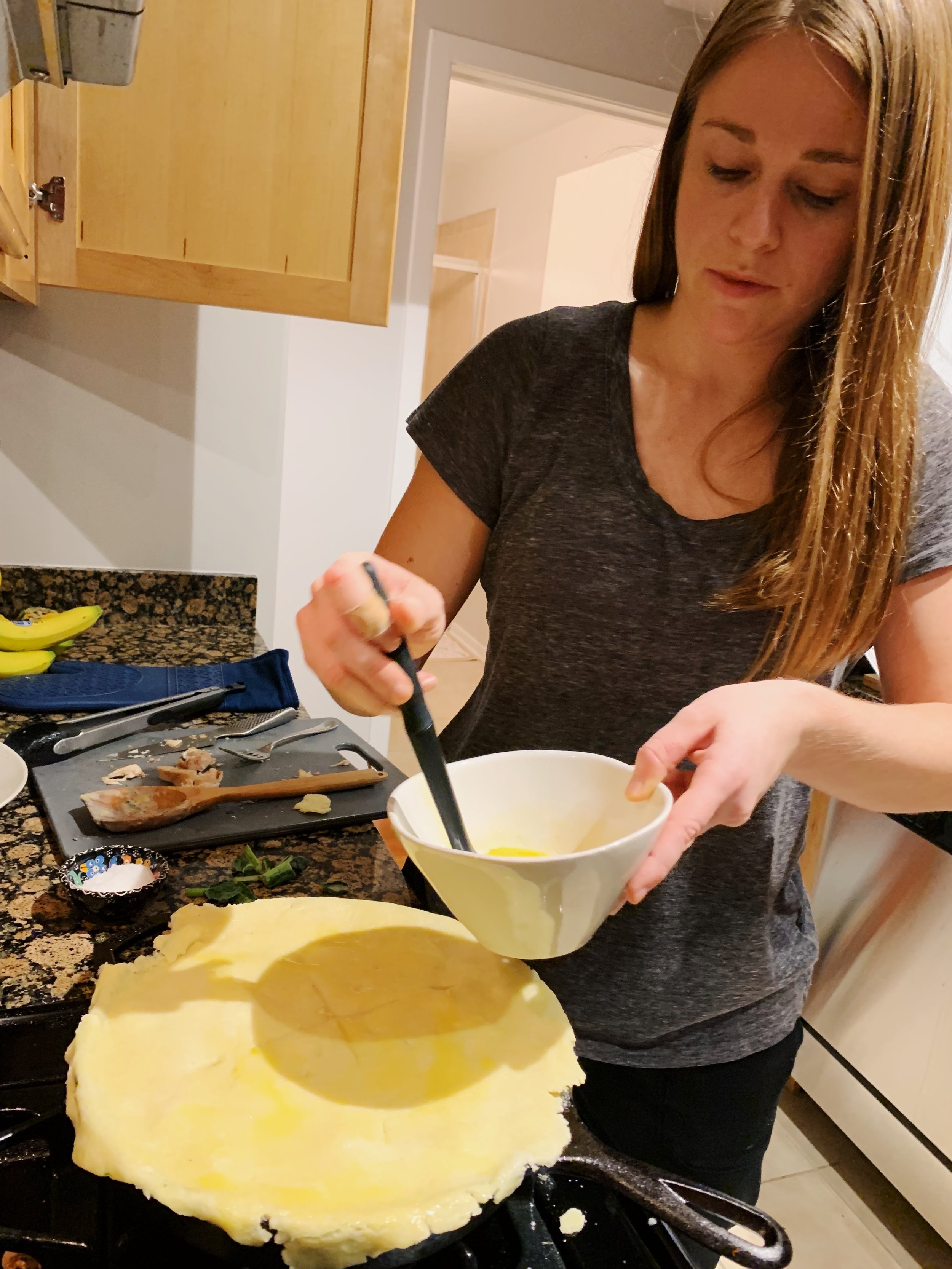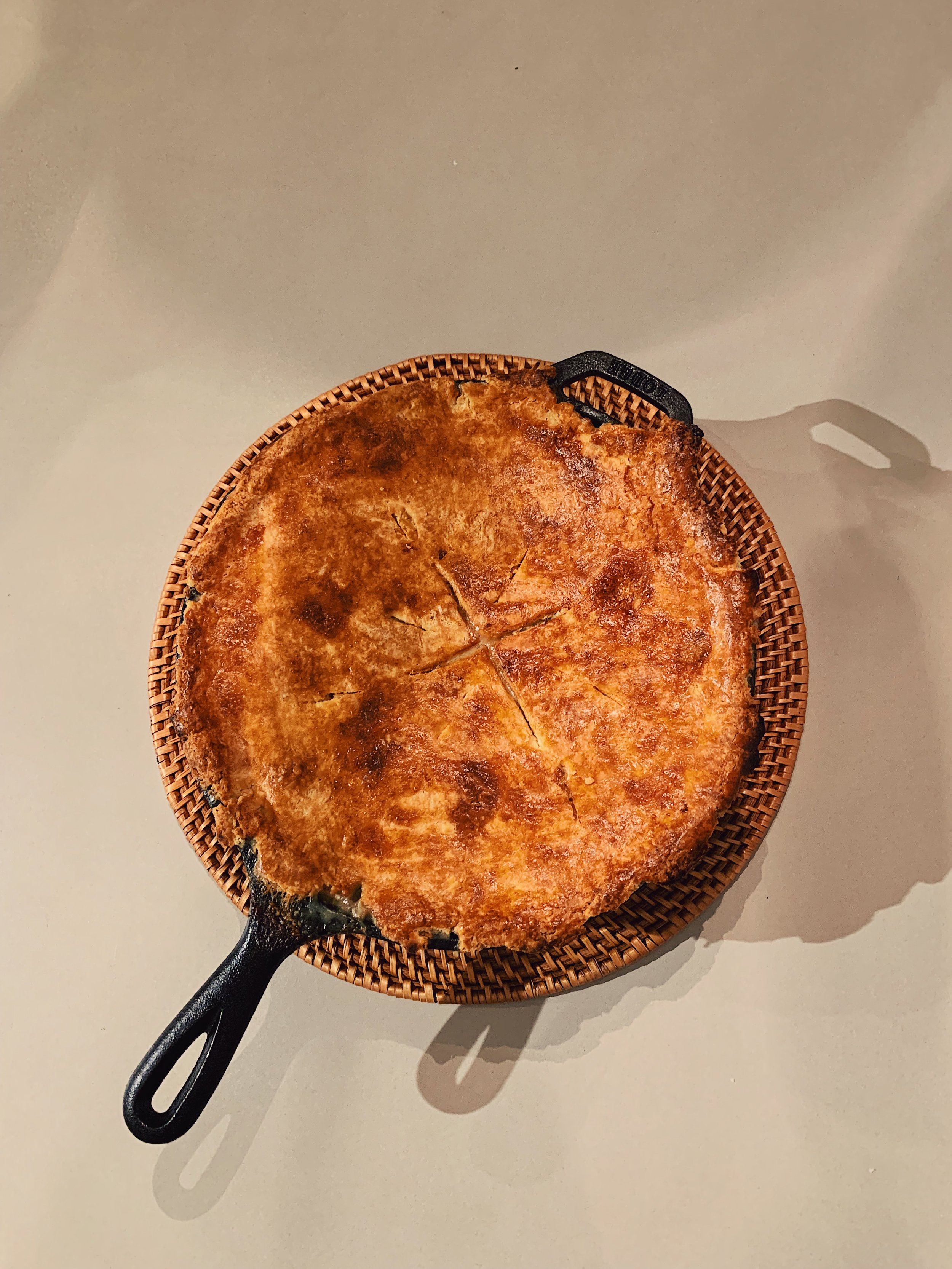It’s snowing furiously outside, sheets of snow flying sideways past the buildings of Chicago. It’s New Year’s Day, 2022. It’s most certainly not Spring. And I would far prefer to be watching the Harry Potter Reunion on HBO instead of writing an essay about seafood stew, but so it goes.
[Okay, confession. I wrote the above sentences, and then decided to close my laptop and watch part of the HP Reunion. It was a great decision. It’s now January 2.]
I was most certainly not looking forward to making this stew. To eat one kind of seafood requires some self-convincing. To eat three kinds of seafood in one dish is almost impossible for me. This recipe calls for clams (mmm), cod (meh), and smoked trout (huh). I called an “audible” (a sports term I inherited through marriage, FYI) and skipped the smoked trout. While the cod turned out alright, it was a little fishy for my taste. Ultimately, I would have been most happy with this stew if it were just the veggies and the clams. But that’s just me!
The stew comes together in a multi-step process. First, sauteeing the vegetables - celery, shallot, potato - until soft. The recipe calls for leeks, but I somehow missed it when creating my shopping list, so I made do with what I had on hand. Then white wine and bay leaves join and simmer until partially reduced. I poured seafood stock and water into the dutch oven and brought everything to a simmer, letting the potatoes start to fall apart, about 35 minutes. I will just note here that this was my first time purchasing seafood stock, and beforehand, I was nervous. I imagined a liquid that smelled like a fish tank. Well, I was wrong. I took one whiff of the open stock carton and hardly smelled a thing. Which gave me more confidence in what I was about to consume.
I plopped my scrubbed clams into the simmering stew, along with a cup of frozen peas. Then placed the lid on and waited for the clams to open - about 12 minutes. The final step requires laying the pieces of cod into the broth while trying not to destroy their delicate flesh. I mostly succeeded. The pot’s lid returns once more so the cod can cook through.
To serve, I ladled the stew into each bowl, followed by a dollop of crème fraiche and a mixture of parsley, tarragon, and lemon zest. I also warmed some slices of homemade sourdough bread for dipping. Just like Alison’s Clams with Cod and Cream (a v similar recipe, by the way) I would gladly count sourdough dipped in the broth as my dinner.
A final word about “stew” vs. “chowder.” Alison’s recipe notes say that she waffled between whether to call this recipe a stew or a chowder, but ultimately decided there’s no difference before choosing “stew.” Jordan, Margaret, and I kindly, but firmly, disagree. In the words of Margaret: “I associate chowders with corn and seafood. To me, a chowder has to be creamy, usually through the addition of dairy, but sometimes can happen through other means (like maybe pureeing some portion of the chowder?). I’ve never heard of a beef chowder, for example.” If you have further thoughts on this stew v. chowder debate, feel free to comment below.
199 recipes cooked, 26 to go.



